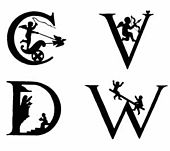fiction.wikisort.org - Writer
Luise Adelaide Lavinia Schopenhauer, known as Adele Schopenhauer (12 July 1797 – 25 August 1849), was a German author. She was the sister of the philosopher Arthur Schopenhauer and daughter of author Johanna Schopenhauer. Henriette Sommer and Adrian van der Venne were pseudonyms used by her.
Adele Schopenhauer | |
|---|---|
 Adele Schopenhauer in 1841 Portrait by Alexander von Sternberg | |
| Born | Luise Adelaide Lavinia Schopenhauer 12 July 1797 Hamburg, Holy Roman Empire |
| Died | 25 August 1849 (aged 52) Bonn, German Confederation |
| Resting place | Bonn, Germany |
| Pen name |
|
| Occupation |
|
| Language | German |
| Relatives |
|
Life and work



Adele Schopenhauer was born in Hamburg to Heinrich Floris Schopenhauer, a businessman, and his wife Johanna. She grew up in Weimar under the influence of a circle of artists and scholars who gathered in the literary salon run by her mother, but she received no formal education. She was highly gifted and engaged in literature and poetry. She not only wrote fairy tales, poems, and novels, but was also a talented papercut artist. Both her papercuts and her literary contributions have been recognized and appreciated, especially in the English-speaking world.[1] She was sociable and likable, but her love interests were unrequited, and she never married.[2]
Loss of assets in 1819
In May 1819, the Danzig banking house Muhl collapsed. Johanna and Adele Schopenhauer had deposited all the money they had inherited upon Heinrich Schopenhauer's death in 1805 in that bank, and thus lost a large part of their assets when the bank collapsed. Arthur Schopenhauer had wisely left only one-third of his assets in Muhl and was not willing to engage in a settlement with Muhl. This incident led to a further deterioration of the relationship between the two women and Arthur, because they repeatedly sent him letters, in vain, asking him to approve the settlement.[3] The further development of the lawsuit proved Arthur right. Mother and daughter settled on an agreement with a 70% loss and lost most of their wealth. Arthur, however, waited and refused to cash in his promissory notes. Muhl, who was considered a shrewd tactician, tried till the end to get Arthur to agree to a settlement with the generous offer of a 70% asset return plus a flock of sheep. But when Muhl recovered financially and again became solvent, Arthur was able to get his entire money back some years later.
A close friend of Goethe's daughter-in-law Ottilie (de), Adele Schopenhauer often visited Goethe's house in Weimar. She was known to have called Goethe "father", and he praised her abilities.[4][5]
This loss of wealth was not without drastic consequences. Although Johanna could make some earnings through her writing career and Adele retained some residual assets because she was protected in part by her immaturity, the lifestyle of the Schopenhauer women in the 1820s was very different from that of earlier years. This is also apparent from a letter Adele wrote 17 years after the loss, in which she speaks of "false prosperity".[6]
Move to Bonn
Due to the change of circumstances in Weimar and their unfavorable financial situation, the standing of the Schopenhauers in Weimar apparently dropped.[7] Adele was able, in 1828, to persuade her mother Johanna to move to Bonn. They could not initially afford to live year-round in Bonn, so they temporarily moved to Unkel, a cheaper city. In Bonn, Adele was a close friend of Annette von Droste-Hülshoff and of Sibylle Mertens-Schaaffhausen.
After her mother's death in 1838, Schopenhauer travelled a lot, mostly to Italy, until she finally returned to Bonn, seriously ill, where she died in 1849 and was buried on Goethe's 100th birthday. Her friend Sibylle Mertens-Schaaffhausen made a touching epitaph in Italian. Four days after Schopenhauer's funeral, Mertens-Schaaffhausen held a private memorial service, following a pattern from classical antiquity, in her garden on Wilhelmstraße. Adele Schopenhauer's grave is located in the old cemetery in Bonn.[8]
Literary works
- Anna. Ein Roman aus der nächsten Vergangenheit [Anna: A novel from the most recent past]. Parts 1–2. Leipzig: Brockhaus, 1845.
- Eine dänische Geschichte [A Danish story], Braunschweig: Westermann, 1848.
- Gedichte und Scherenschnitte [Poems and silhouettes]. 2 volumes. Edited by H. H. Houben and Hans Wahl. Leipzig: Klinkhardt, 1920.
- Volume 1: Poetry
- Volume 2: Papercuts
- Haus-, Wald- und Feenmärchen [Fairy tales of the home, the forest, and of fairies]. Leipzig: Brockhaus, 1844.
- Tagebuch einer Einsamen [Diary of a lonely one]. Edited, and with an introduction, by H. H. Houben. With silhouettes of the author and an appendix by Rahel E. Feilchenfeldt-Steiner; Munich: Matthes & Seits Verlag, 1985.
- Florenz. Ein Reiseführer mit Anekdoten und Erzählungen [Florence: A guide with anecdotes and stories]; 1847/48. Edited by Waltraud Maierhofer. Weimar: VDG, 2007.
- Vom-Niederrhein [From the lower Rhine]. Edited by Ulrich Bornemann. Calendar for the Kleverland for the year 2009. Kleve 2008, pages 99–117. ISBN 978-3-89413-009-1
Papercut art
References
Citations
- Weber, Christa (21 November 2009). "Adele Schopenhauer". Deutscher Scherenschnittverein e.V. [German papercut art]. Retrieved 7 June 2014.
- Cartwright 2010, p. 233.
- Gwinner 1878.
- Seeliger 2004, p. 473.
- Cartwright 2010, p. 232.
- Gwinner 1878, p. 200.
- Gwinner 1878, p. 387.
- Steidele 2010.
Bibliography
- Franz Brümmer (1891), "Schopenhauer, Adele", Allgemeine Deutsche Biographie (ADB) (in German), vol. 32, Leipzig: Duncker & Humblot, pp. 332–333
- Domietta Seeliger (2007), "Schopenhauer, Adele", Neue Deutsche Biographie (in German), vol. 23, Berlin: Duncker & Humblot, pp. 473–474; (full text online)
- Büch, Gabriele (2002). Alles Leben ist Traum. Adele Schopenhauer. Eine Biographie [All life is a dream. Adele Schopenhauer: A biography] (in German). Berlin. ISBN 3-7466-1797-9.
- Seeliger, Domietta (2004). Adele Schopenhauer. Nicht nur die Schwester des Philosophen. Analyse des Erzählwerks von Adele Schopenhauer und der dramatischen Dichtung "Erlinde" von Wolfgang Maximilian von Goethe und Adele Schopenhauer [Adele Schopenhauer: Not only the sister of the philosopher. Analysis of the narrative work of Adele Schopenhauer and the dramatic poem "Erlinde" by Wolfgang Maximilian von Goethe and Adele Schopenhauer.] (in German). Frankfurt on Main: Lang (Dissertation, University of Perugia). ISBN 3-631-53227-X.
- Hein, Karsten (2001). Ottilie von Goethe (1796–1872). Biographie und literarische Beziehungen der Schwiegertochter Goethes [Ottilie von Goethe (1796-1872): Biography and literary relationships of Goethe's daughter-in-law] (in German). Frankfurt on Main: Peter Lang GmbH. ISBN 3-631-37438-0.
- Pohl, Ilse (2005). Miniaturen – Über Cornelia Goethe, Adele Schopenhauer, Clara Schumann und Annette von Droste-Hülshoff [Mini biographies: On Cornelia Goethe, Adele Schopenhauer, Clara Schumann, and Annette von Droste-Hülshoff] (in German). Frankfurt on Main: Cornelia Goethe Academy Publishers. ISBN 3-933800-06-4.
- Steidele, Angela (2010). Geschichte einer Liebe: Adele Schopenhauer und Sibylle Mertens [The story of a love: Adele Schopenhauer and Sibylle Mertens] (in German). Berlin and Frankfurt: Suhrkamp/Insel. ISBN 978-3-458-17454-7.
- Rahmeyer, Ruth (2002). Ottilie von Goethe. Eine Biographie [Ottilie von Goethe: A Biography] (in German). Frankfurt on Main: Insel.
- Ujma, Christina; Fischer, Rotraut (2008). ""Florenz lebt!", Adele Schopenhauer, Fanny Lewald und die Florenzbeschreibungen in Vor- und Nachmärz." ["Florence is alive!" Adele Schopenhauer, Fanny Lewald, and Florence descriptions before and after the March Revolution]. Jahrbuch für internationale Germanistik [Yearbook of International German Studies] (in German). Vol. 40. pp. 85–104.
- Gwinner, Wilhelm von (1878). Schopenhauer's Leben [Schopenhauer's life] (in German). Leipzig: F.A. Brockhaus. Retrieved 7 June 2014.
- Cartwright, David E. (2010). Schopenhauer: A Biography. Cambridge University Press. ISBN 978-0521825986.
External links
- Literature by and about Adele Schopenhauer in the German National Library catalogue
- Works by Adele Schopenhauer at Projekt Gutenberg-DE (in German)
- Full text of poems by Adele Schopenhauer
- Christa Bürger: Die Erotomanin, die sich nicht traut: Das gescheiterte Leben Adele Schopenhauers ("The erotomaniac who doesn't dare: The failed life of Adele Schopenhauer"), Transcript of segment aired on 9 June 2013 as part of the program Essay und Diskurs ("Essay and discourse") on Deutschlandfunk
На других языках
- [en] Adele Schopenhauer
[es] Adele Schopenhauer
Luise Adelaide Lavinia Schopenhauer, más conocida como Adele Schopenhauer (Hamburgo; 12 de julio de 1797 - Bonn; 25 de agosto de 1849), fue una escritora, poeta y artista alemana. Era hermana del filósofo Arthur Schopenhauer e hija de la novelista Johanna Schopenhauer. Henriette Sommer y Adrian van der Venne fueron seudónimos utilizados por ella.[fr] Adèle Schopenhauer
Adèle Schopenhauer (de son vrai nom Luise Adelaide Lavinia Schopenhauer) (née le 12 juillet 1797 à Hambourg, morte le 25 août 1849 à Bonn), est une femme de lettres allemande, fille de l'écrivain Johanna Schopenhauer et sœur du philosophe Arthur Schopenhauer.[ru] Шопенгауэр, Адель
Адель Шопенгауэр (нем. Adele Schopenhauer, полное имя Luise Adelaide Lavinia Schopenhauer; 12 июля 1797 (1797-07-12), Гамбург, — 25 августа 1849, Бонн) — немецкая писательница, дочь писательницы Иоганны Шопенгауэр и сестра философа Артура Шопенгауэра.Другой контент может иметь иную лицензию. Перед использованием материалов сайта WikiSort.org внимательно изучите правила лицензирования конкретных элементов наполнения сайта.
WikiSort.org - проект по пересортировке и дополнению контента Википедии






